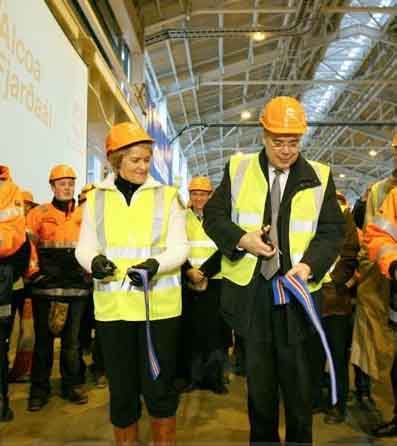Jul 07 2007
1 Comment
‘Blue Eyes in a Pool of Sharks’ by Guðbergur Bergsson
“We have the passive mentality of the eternal colony.”
A talk delivered by Iceland’s foremost author Guðbergur Bergsson (1932-2023) at the Saving Iceland Conference 7 July 2007.
Jesus, a leader of an upcoming universal power knew that he would soon be physically destroyed when he heard women cry over his condition. He then turned to them and said: “Daughters of Jerusalem don’t cry over me, cry rather over you and your children.”
At that time the Roman Empire dominated the world and the lesson Jesus gave reminded people that destruction was not something that would only happen to him but also to future generations. He seems to have already known that in spite of being the Saviour of the world, his death, uprising and the ethics of his learning, destruction as such would go on having future and be constant in acting of Christian nations, at least the European.
Devastation was obviously the nature of great powers.
Till our days they succeed one after another and nothing has changed, people live in constant fear the land and they themselves would be destroyed. So daughters and sons of Iceland will still have to cry over their land which is only a small part of the world at this moment due to globalisation of economical growth which has in stead of promised glory brought widespread hate in form of terror, hate as ethics and revenge, a claim for justice. In our time hate has become a sense of justice.
Because of globalisation there is no reason why we in this country should only cry over our condition. Of course to everyone the nature of a homeland is dearer than the one of others. The world is too big for an individual to have true feelings for it, at least not in details. Feelings for faraway nations with strange sounding names tend to be abstract rather than real, more intellectual than emotional.
This is at least so in my case. I have sailed up the Yangtze River through the impressive XiLing Gorges before that beautiful phenomena of nature was going to disappear for ever in name of Chinas giant progress. I saw cities along the riverbanks, empty houses without dwellers; citizens had been chased away and the rivers turbulent brown water to supply power stations for heavy industry was to take their place. I listened to speeches of proud authorities and common people too. The population is obedient and as usual follow the words of mighty rulers. But at the end they become victims when it will be too late to resolve anything. Nations do not eye destruction until benefit brought to them is harm. Then women cry as daughters of Jerusalem but nothing can be repaired and no universal saviour.
I have seen Egyptian monuments destroyed at the Aswan dam and heard voices of pride but the poverty of neighbour people seemed to be as it always had been. In Spain during Franco’s time villages were wiped out to build dams in name of economical progress. The inhabitants protested, they climbed up to the rooftops to defend their homes and farmers were seen beating police with stick. But they lost. And now, years later, they still cry over the waterpower station producing electricity for heavy industry. Read More
